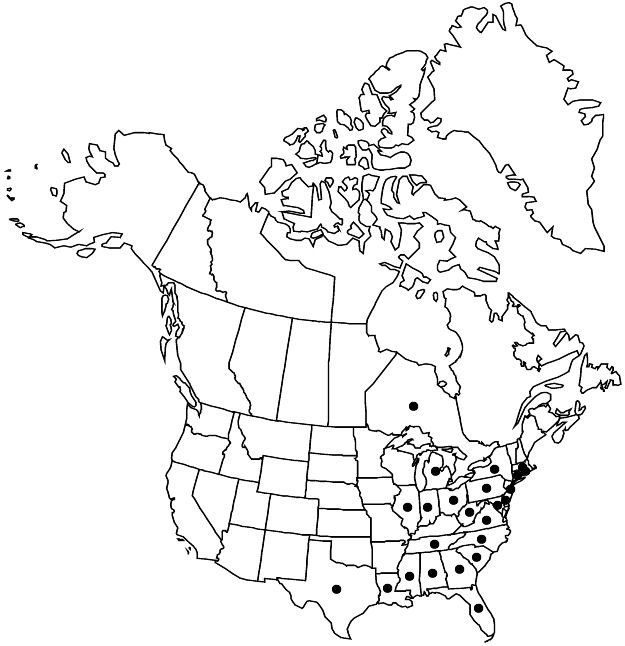Lechea pulchella
New Fl. 1: 91. 1836.
Herbs, perennial. Stems: basal produced; flowering erect, 25–80 cm, sparsely sericeous, glabrescent. Leaves of flowering stems opposite or subopposite; blade linear to narrowly elliptic, 15–30 × 1.5–3 mm, apex acute, indurate, abaxial surface hairy on midvein and, sometimes, margins, adaxial glabrous. Pedicels 1 per axil, 1–2.3 mm. Flowers: calyx 1.4–2 mm, outer sepals shorter than inner. Capsules subglobose, 1.5–2.2 × 1.3–1.6 mm, longer than calyx. Seeds 2 or 3(4).
Distribution

Ont., Ala., Conn., Del., Fla., Ga., Ill., Ind., La., Mass., Md., Mich., Miss., N.C., N.J., N.Y., Ohio, Pa., R.I., S.C., Tenn., Tex., Va., W.Va.
Discussion
Varieties 3 (3 in the flora).
Intergradation among the varieties of Lechea pulchella in areas of overlap is common (B. A. Sorrie and A. S. Weakley 2007b). Some authors (K. Barringer 2004; R. L. Wilbur 1966) have not recognized infraspecific taxa.
Selected References
None.
Lower Taxa
Key
| 1 | Capsules crowded-racemose to tightly clustered at branch tips; pedicels shorter than calyx. | Lechea pulchella var. pulchella |
| 1 | Capsules loosely racemose; pedicels ± equaling or longer than calyx | > 2 |
| 2 | Seeds (2–)3(–4); calyces reddish purple at maturity, 1.7–2 mm. | Lechea pulchella var. moniliformis |
| 2 | Seeds 2(–3); calyces greenish purple at maturity, 1.6–1.8 mm. | Lechea pulchella var. ramosissima |